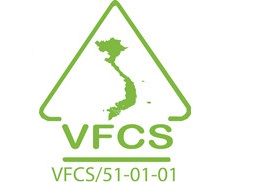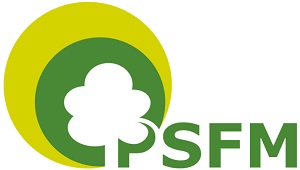ẢNH HƯỞNG CỦA ĐỘ SÂU VÀ THỜI GIAN NGẬP NƯỚC ĐẾN QUÁ TRÌNH PHÁ HỦY CỦA GỖ
DOI:
https://doi.org/10.70169/VJFS.1116Từ khóa:
Gỗ ngập nước, phân hủy sinh học, thành phần hóa học, gỗ lim xanh, gỗ táu mậtTóm tắt
Bài báo trình bày kết quả nghiên cứu về ảnh hưởng của độ sâu và thời gian ngâm nước đến thành phần hóa học của gỗ Lim (Erythrophleum fordii Olive) và gỗ Táu mật (Vatica tonkinensis A. Chev.). Kết quả cho thấy thời gian ngập và độ sâu ngập nước có ảnh hưởng rõ rệt đến sự biến đổi các thành phần hoá học và cấu trúc của gỗ. Hàm lượng các chất tan trong nước lạnh và nóng giảm mạnh, đặc biệt sau 12 tháng đầu ngâm tại độ sâu 30 cm, phản ánh rõ rệt quá trình rửa trôi các chất dễ thuỷ phân. Các chất tan trong dung môi hữu cơ bị ảnh hưởng ít hơn nhưng vẫn có xu hướng giảm dần theo thời gian ngâm nước. Tổng lượng chất chiết xuất của gỗ Lim giảm 44,9% và gỗ Táu mật là 40,4% sau 24 tháng ngâm tại độ sâu 30 cm. Giá trị này chỉ giảm 32,2% và 26,2% sau 24 tháng ngâm tại độ sâu 90 cm. Hàm lượng lignin tuy không thay đổi, nhưng khi so sánh với xenlulo và hemixemlulo thì có xu hướng tăng (35,1 - 35,9%), do sự suy giảm của hai chất này. Cả xenlulo và hemixenlulo đều giảm, với mức giảm rõ hơn ở độ sâu 30 cm, điều này phản ánh hoạt động mạnh của vi khuẩn và enzyme phân huỷ tại vùng tiếp xúc nhiều với oxy. Độ hút nước tối đa tăng theo thời gian ngâm và giảm theo độ sâu, cao nhất ở mẫu 30 cm sau 24 tháng (tăng 11,49% với gỗ Lim và 25,97% với gỗ Táu mật), cho thấy cấu trúc tế bào gỗ bị suy thoái, tạo khoảng trống trong gỗ để giữ nước nhiều hơn. Để làm chậm quá trình phân hủy sinh học của gỗ, cần giữ mẫu ở độ sâu tối thiểu 60 cm so với mặt nước tại bể ngâm.
Tài liệu tham khảo
1. Blanchette RA, 1995. Biodeterioration of archaeological wood. CAB Biodeterioration Abstracts 9, 113–127.
2. Blanchette RA, Cease KR, Abad AR, Koestler RJ, Simpson E, Sams GK, 1991. An evaluation of different forms of deterioration found in archaeological wood. International Biodeterioration 28, 3–22.
3. Blanchette RA, Hoffmann P, 1994. Degradation processes in waterlogged archaeological wood. In: Hoffmann, P. (Ed.), Proceeding of the Fifth ICOM Group on Wet Organic Archaeological Materials Conference, 16–20 August 1993, Portland, Maine, pp. 111–142.
4. Cartwright KG, Findley WPK, 1958. Decay of timber and its prevention, 2nd Edition. Her Majesty’s Stationary Office, London.
5. Daniel GF, Nilsson T, Singh AP, 1987. Degradation of lignocellulosics by unique tunnel-forming bacteria. Canadian Journal of Microbiology 33, 943–948.
6. Hedges JI, 1990. The chemistry of archaeological wood. In: Rowell RM, Barbour RJ (Eds.), Archaeological wood, properties, chemistry and preservation, Advances in Chemistry Series, vol. 225. American Chemical Society, Washington, DC, pp. 111–140.
7. Hoffmeyer P, 1976. Mechanical properties of soft-rot-decayed Scots pine with special reference to wooden poles. In: Soft-Rot in Utility Poles Salt-Treated in the Years 1940–1954. Swedish Wood Preservation Institute, Stockholm 117, 211–255.
8. Kim YS, 1990. Chemical characteristics of water-logged archaeological wood. Holzforschung 44, 169–172.
9. Kim YS, Singh AP, Nilsson T, 1996. Bacteria as important degraders in waterlogged archaeological woods. Holzforschung 50, 389–392.
10. Macleod I, 1987. Conservation of wet wood and metal. Western Australian Museum, Perth, Western Australia.
11. Thành ND, Liên LT, 2020. Bước đầu thực hiện các phương pháp bảo quản di vật gỗ khai quật tại Thủy Nguyên, Hải Phòng. Hội nghị khảo cổ học toàn quốc lần thứ 55.
12. Thành ND, Nishimura H, Imai T, Watanabe T, Kohdzuma Y, Sugiyama J, 2018. Natural durability of the culturally and historically important timber - Erythrophleum fordii Oliver wood against white-rot fungi. Journal of Wood Science, 64:301–310.
13. Rowell RM, Barbour RJ, 1990. Archaeological wood, properties, chemistry and preservation, Advances in Chemistry Series, vol. 225. American Chemical Society, Washington, DC.
14. Scheffer TC, Morrell JJ, 1998. Natural durability of wood: a worldwide checklist of species. Forest Research Laboratory Oregon State University Research Contribution 22, Corvallis, Oregon, 58 pp.
15. Singh AP, Nilsson T, Daniel GF, 1990. Bacterial attack of Pinus sylvestris wood under near-anaerobic conditions. Journal of the Institute of Wood Science 11, 237–249.
16. TAPPI T207cm-99, 1999. Water solubility of wood and pulp, 1999. Technical Association of the Pulp and Paper Industry.
17. TAPPI T204 cm-97, 1997. Solvent extractives of wood and pulp, 1999. Technical Association of the Pulp and Paper Industry.
18. TAPPI T222 om-02, 2002. Acid-insoluble lignin in wood and pulp, 2002. Technical Association of the Pulp and Paper Industry.
19. TAPPI T203 cm-99, 1999. Alpha- beta- and gamma-cellulose in pulp, 1999. Technical Association of the Pulp and Paper Industry.
20. Timell TE, 1986. Compression wood in gymnosperms. Springer, Heidelberg, 2150 pp.
21. Wilcox WW, 1968. Changes in wood microstructure through progressive stages of decay. U.S. Fororest Services Product Laboratory.
22. Zabel RA, Morrell JJ, 1992. Wood microbiology, Decay and its Prevention. Academic Press, Orlando.













